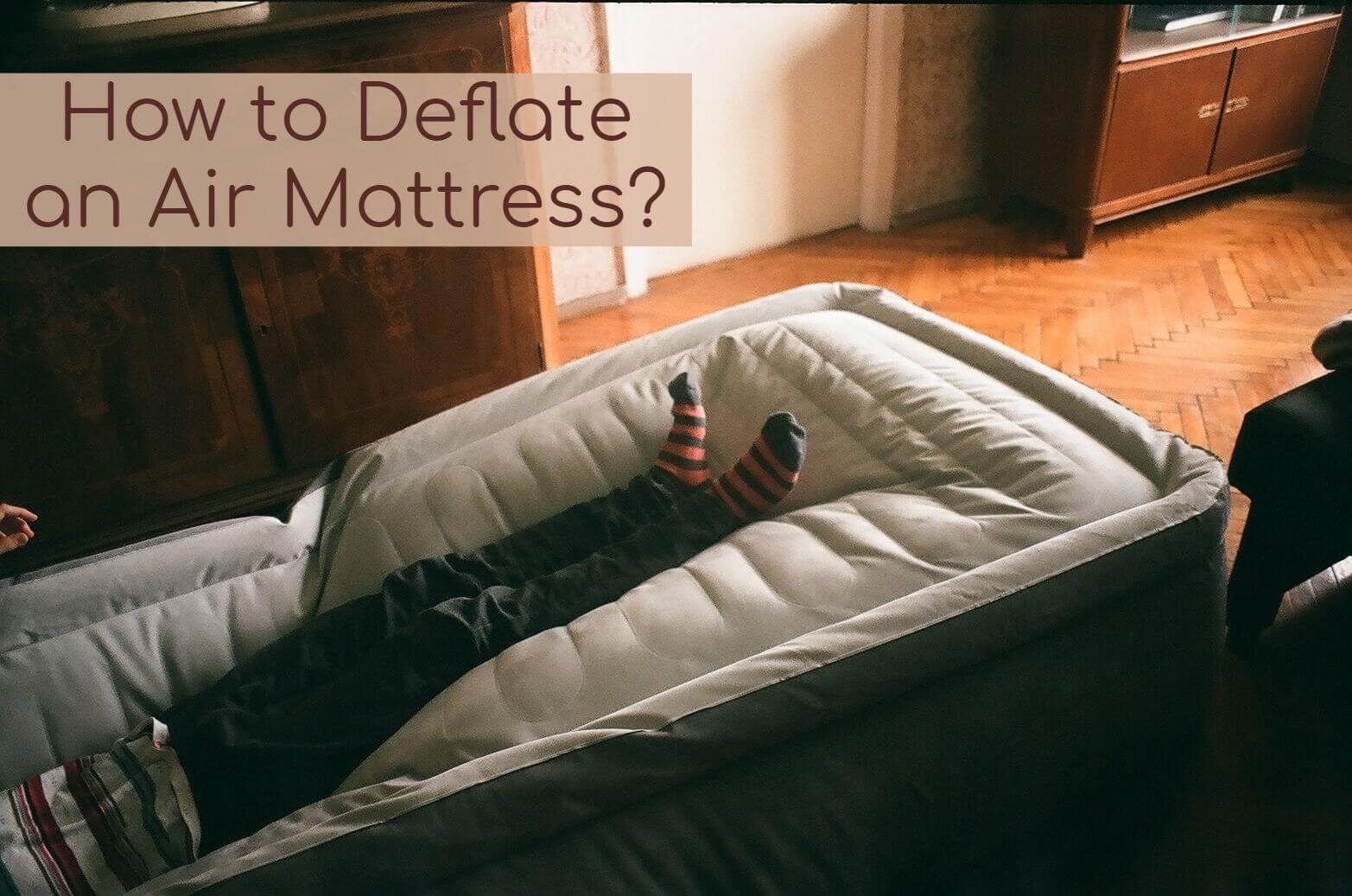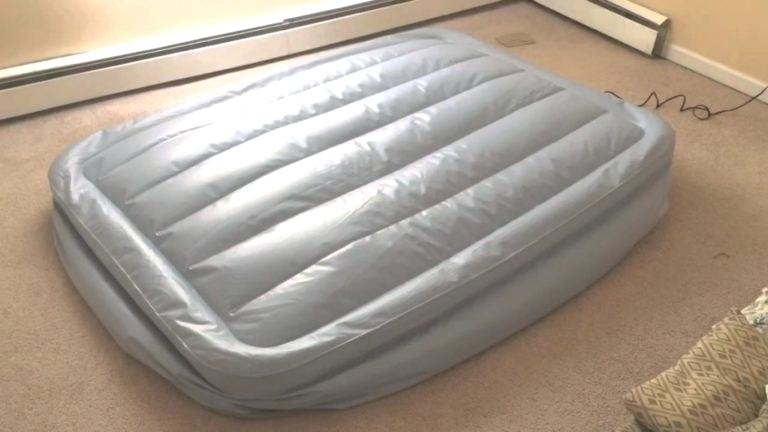How to Deflate an Air Mattress?
by | Last Updated
Deflating an airbed isn’t rocket science. But it’s still a thing that should not be taken easily.
Any sharp move or excessive pressure may result in accidental damage.
No one wants that.
That’s why I assembled for you these simple tips on how to deflate an air mattress so that you can store it properly between the visits or pack it for the road trip in minutes.
Prepare Your Mattress for Deflation
Now, before you deflate an airbed, you need to make some preparations:
- Put the airbed on the hard flat surface. Your mattress needs to be stable because it packs a lot of air under the relatively high pressure. Although this is essential to keep you comfortable, it may pose a threat to your environment when a deflating mattress suddenly jumps to the side like a balloon and breaks your favorite vase.
- Remove all the items from the surface. This applies to the bedding elements as well. If you’re using a mattress topper, remove it and put aside; thus, you will make the deflation process smoother and avoid unexpectable damage.
Be sure to store your air bed after the deflation properly. A thick cardboard box or hard plastic container with a lid will do fine. This way, your mattress will be protected from accidental punctures or rips during storage.
Now, the specific instructions on deflating will differ depending on whether your mattress comes with a built-in pump or you have to use an external pump. Let’s see each of these cases in detail.
How to Deflate an Air Mattress With a Built-In Pump?

Source: drainman.info
There’s one great thing I love about the air mattress market today.
Most of the airbeds available online and in brick-and-mortar stores come with a built-in electric pump. That means the deflation process will be as easy as pie.
So, for deflating the mattress with a built-in pump, you’ll need to perform the following steps:
- Plug in the cord.
- Turn the switch on the pump to a “Deflate” position. Some airbeds have the “Inflate” and “Deflate” buttons located near the pump, while others may have a switch with the minus sign or zero that indicates deflation.
- Wait. Once the button is pushed, the deflation process will start itself. You’ll just have to wait between 30 seconds and 5 minutes before your mattress will go fully flat and become ready for storage.
Mattresses with a pump don’t require your supervision or any additional moves during the deflation process. After the motor stops, put the switch into a neutral position and plug out the cord.
Voila!
Now you’re ready to pack your airbed.
Deflating an Airbed With a Separate Pump
Although airbeds with built-in pumps are the best, they’re obviously on the more expensive side.
In case your inflatable mattress comes without the motor, investing in a separate electric pump might be a great idea.
So, what do you need to do to deflate an airbed with a separate pump?
- Identify the correct mattress opening. Mattresses that need a separate pump for inflation and deflation typically have 2 valves. The narrow one is for blowing the air inside the mattress. The wide valve, on the other hand, is used for sucking the air out.
- Attach the pump. Some pumps have separate valves as well for pumping the air into the mattress and taking it out. The nozzles for each valve are typically marked by the manufacturer, so finding the right one will be an easy task. Hook the nozzle into the deflation opening of the pump and attach it to the mattress valve.
- Switch on the pump. This will begin the deflation process immediately. You can speed it up even more by putting pressure on your mattress. For example, you can ask someone to lie on the airbed while it’s deflating.
- Roll the mattress while it’s deflating. This way, you will ensure that no extra air is trapped inside the mattress. It is a necessity because any air remained inside can be put under pressure, which may result in damage. That’s why it’s crucial to store your air mattress in a completely deflated state.
One more thing:
Some separate pumps may be unable to maintain tight contact with the valve opening, which can slow the deflation process. To avoid this, just hold the pump with your hands while it’s working.
How to Deflate an Air Sofa?
Now, some of you may wonder how to deflate an air mattress that has several sections. These beds usually have inflated borders or look like a sofa.
The thing is, the deflation process is pretty straightforward here too. The valves on these beds typically have an enumeration. So, all you need to do is just follow the numbers above them (in reverse order), and you’re all set.
You can watch the video of the deflation process for Shrunks inflatable bed. This one has two separate sections, but the same algorithm applies to mattresses with more sections.
How to Deflate an Air Mattress Without a Pump?

Source: thebighouses.com
This is the most resourceful method. However, in some cases, it’s also the only method you can use.
So, here’s what you can do:
- Use your body weight. Yes, that’s right. You can just open the wider valve and keep lying on your mattress until it becomes fully deflated.
- Roll your mattress. After your airbed has lost some volume, gently squeeze the edge opposite to the valve and begin to roll it. You may use the pressure from your knees and hands to remove the excess air a bit faster.
- Put on some load. You can place some items on the top of the mattress to force the air to come out. Just make sure that you set the load evenly across the whole mattress surface.
Do not jump on your mattress, whether it’s deflating or not. Sharp pressure can cause punctures or rips, so after deflating, you may end up searching for guides on how to patch your air mattress or — even worse — have to start looking for a new bed.
An alternative way of deflating your airbed without a pump is using the vacuum cleaner. Just place the nozzle around the wide valve and turn the vacuum on.
This method is a bit slower than the pump, but hey — at least it’s working!
So, how often do you use an air mattress? Is there any deflation method you use that isn’t mentioned here? Share it below!





No Comments